Nong Khai is a small province in the north of Thailand, alongside the Mekong River and next to the border with Laos. A charming place to spend a few days, the town is also home to one of the strangest attractions in all of Thailand: the unusual and whimsical Sala Keoku.
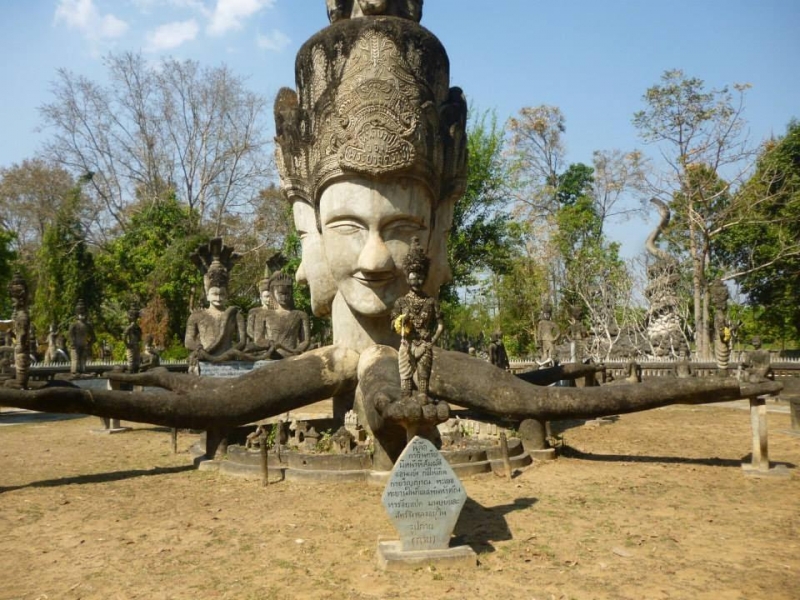
Also known as Wat Khaek and commonly referred to in English as the Buddha Park, Sala Keoku is the result of one man’s unusual visions and aspirations. Odd, and sometimes graphic and thought-provoking, statues are spread across a large leafy area. Just when you think that things couldn’t possibly get even weirder, you turn a corner and realise that yes, there’s plenty more strangeness to be found!
Brief overview of Sala Keoku
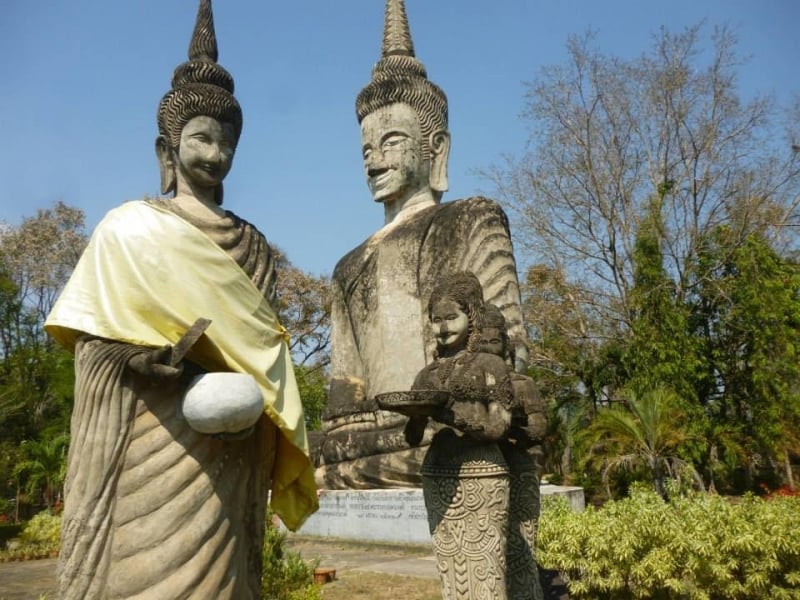
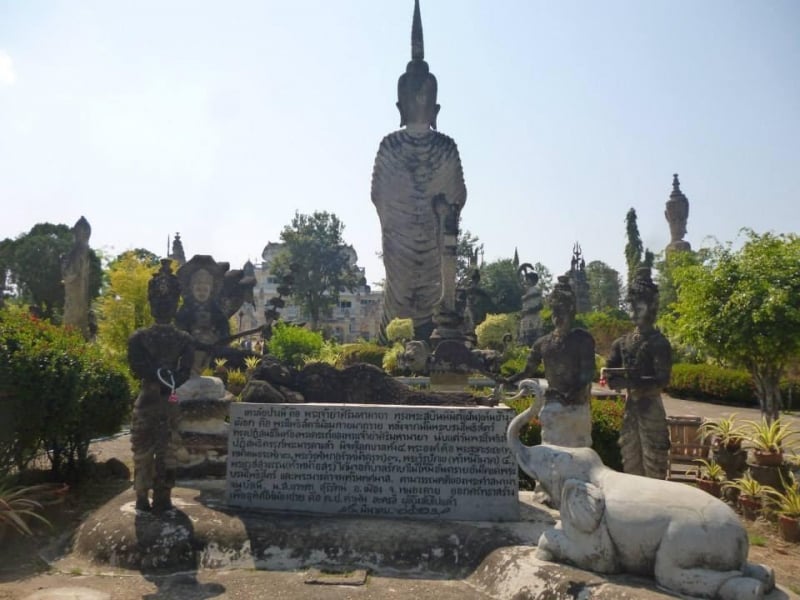
Sala Keoku was constructed in the 1970s on the wishes of a man called Bunleua Sulilat. A Nong Khai native, stories say that the quirky and reclusive Bunleua Sulilat tumbled into a cave and found a spiritual sage who he then spent time studying with and developing his own mystical beliefs. He wanted to build a large park that questioned commonly held religious and spiritual ideals and that presented his own views on life, religion, and the afterlife. You can see strong Hindu and animist influences mixed in with Buddhist ideas, as well as scenes that have likely come from Sulilat’s imagination. The huge concrete statues were built using materials donated by a small but loyal band of followers—many locals saw Sulilat as being rather mad!
Neighbouring site in Laos
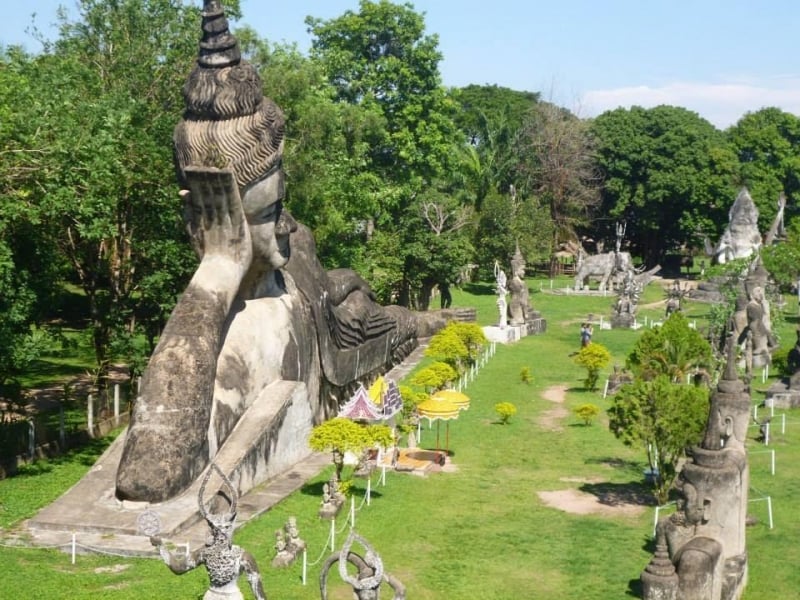
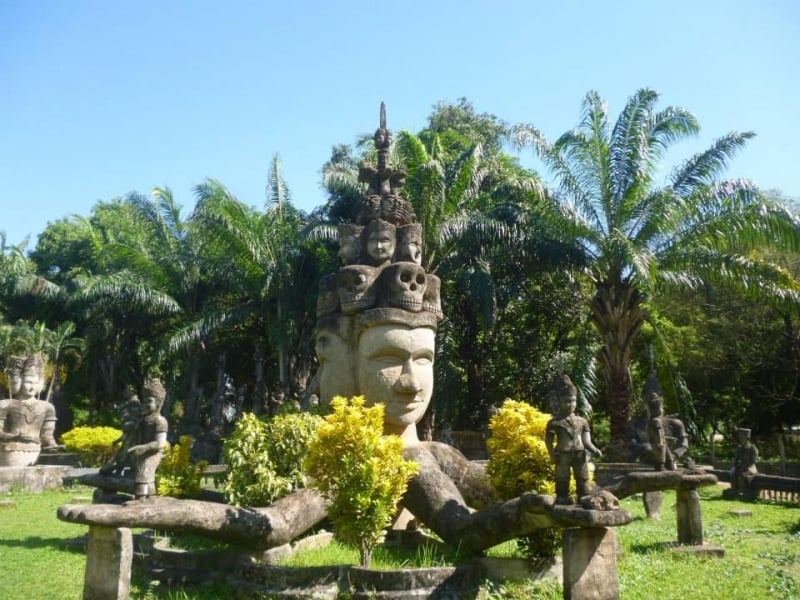
Many visitors to the Laotian capital of Vientiane call by the unusual Xieng Khuan Buddha Park, completely unaware that a similar park lies just across the waters of the Mekong River in Thailand. Also known as Spirit City, Xieng Khuan Buddha Park was also the work of Bunleua Sulilat. He spent time living in Laos before returning to his birthplace of Nong Khai (in Thailand) when communism began to spread throughout Laos. While Xieng Khuan is older and slightly more well-known, Sala Keoku is larger and has even more quirkiness throughout the grounds.
The final resting place of Bunleua Sulilat
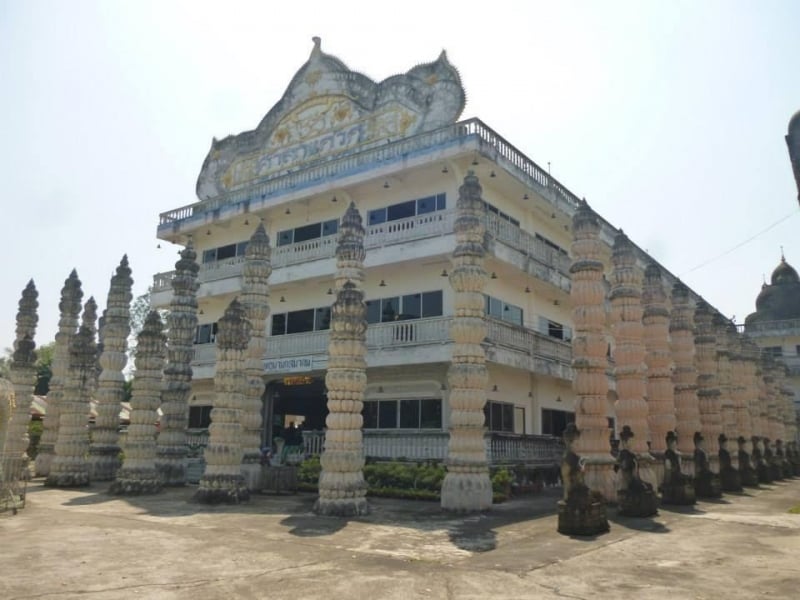
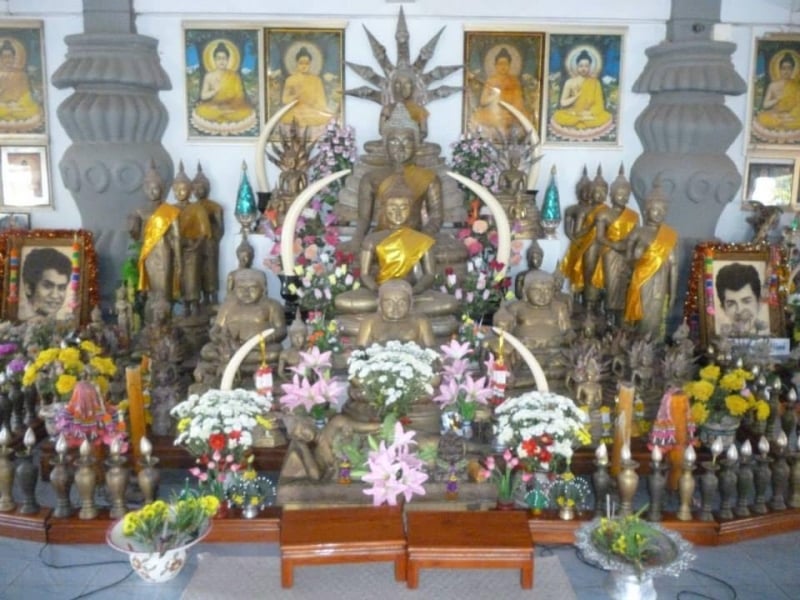
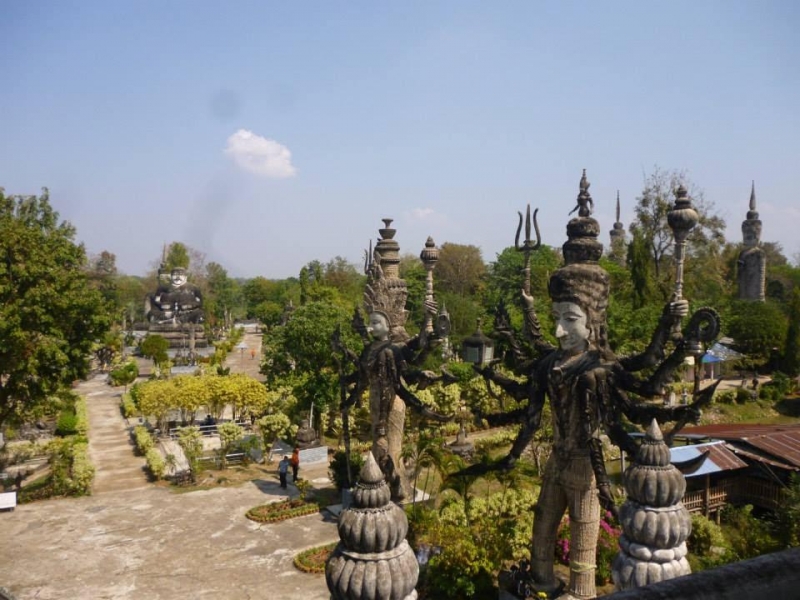
Bunleua Sulilat’s remains are contained within a large mosque-like temple building. Imposing columns stand in symmetry around the outsides of the square building, while the insides are filled with an array of statues of the Lord Buddha in various postures, as well as other spiritual statues. People come here to pray and leave offerings, and the sweet smell of incense and flowers hangs thickly in the air. Sulilat is entombed within the building and there is a shrine, complete with many photographs, in his honour. You can climb to the top of the building for fabulous views of the complex.
Moral teachings at Sala Keoku
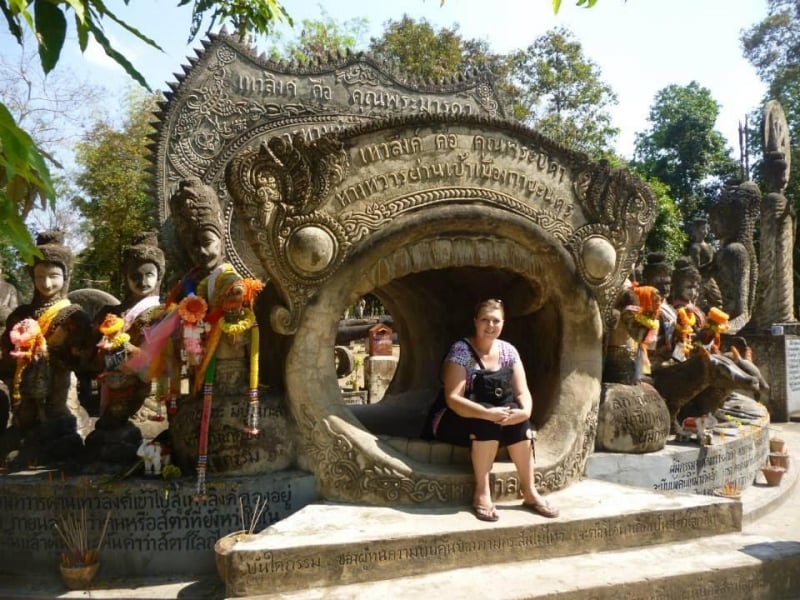
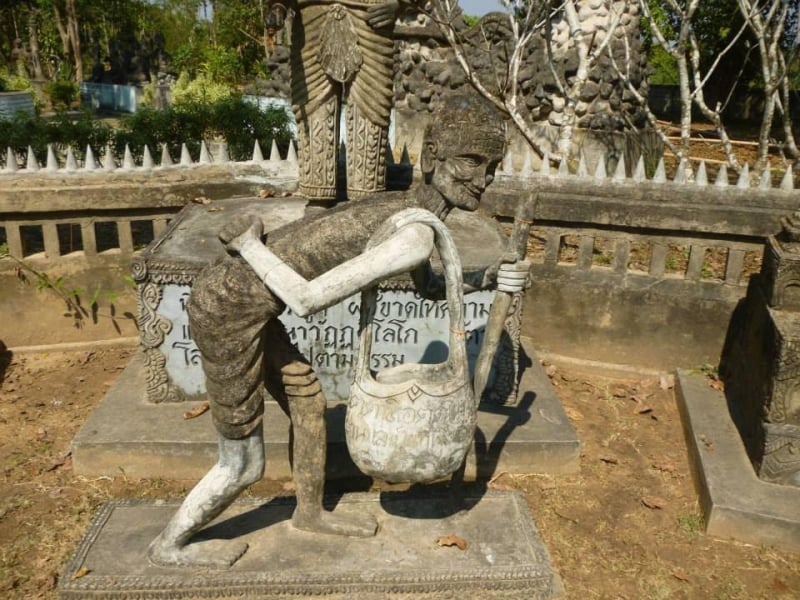
Some of the 100+ statues and sculptures at Sala Keoku seek to teach moral lessons and encourage people to lead a righteous life. On seeing the displays, it may be more appropriate, though, to say that they try to discourage people from straying away from the right path—the statues are pretty thought-provoking, serving as warnings of what will happen to those who make transgressions during their lives!
This section is separated from the rest of the park, enclosed within walls and accessible through a large gaping mouth. Crawl through the mouth and you can see Sulilat’s interpretation of the circle of life, with statues that show a couple gradually ageing side by side. Walk around the circle and you’ll notice the odd statues on the outer edges depict corruption, sin, and dishonesty. There are those that try to give messages about the role of the monarchy, the justice system, Thai culture, and society in general.
Alternative Interpretations of faith
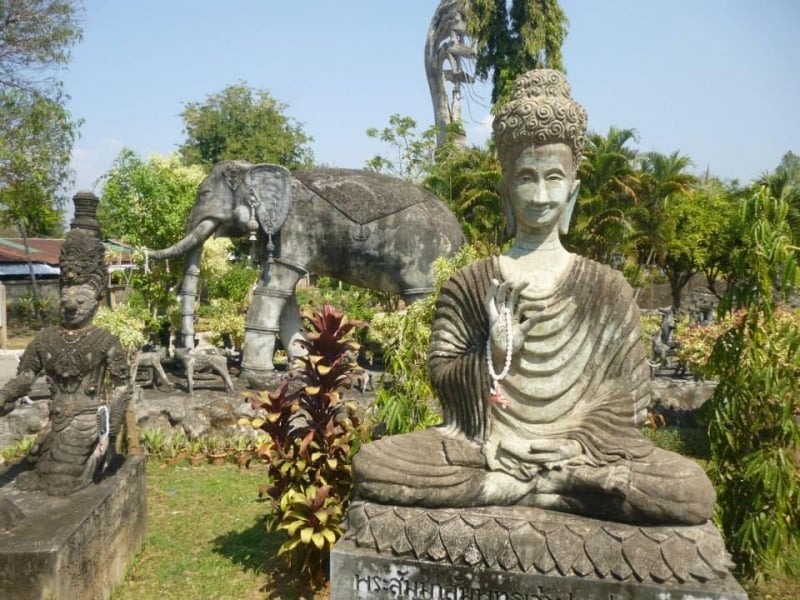
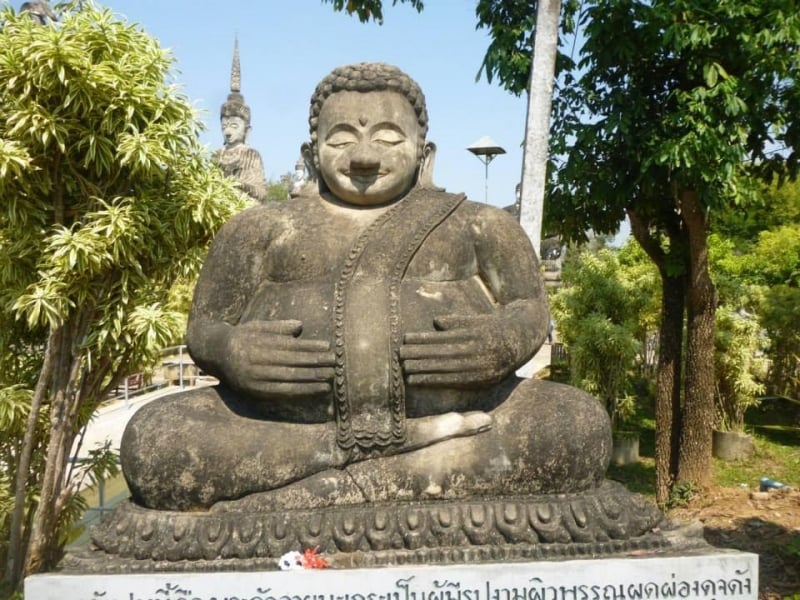
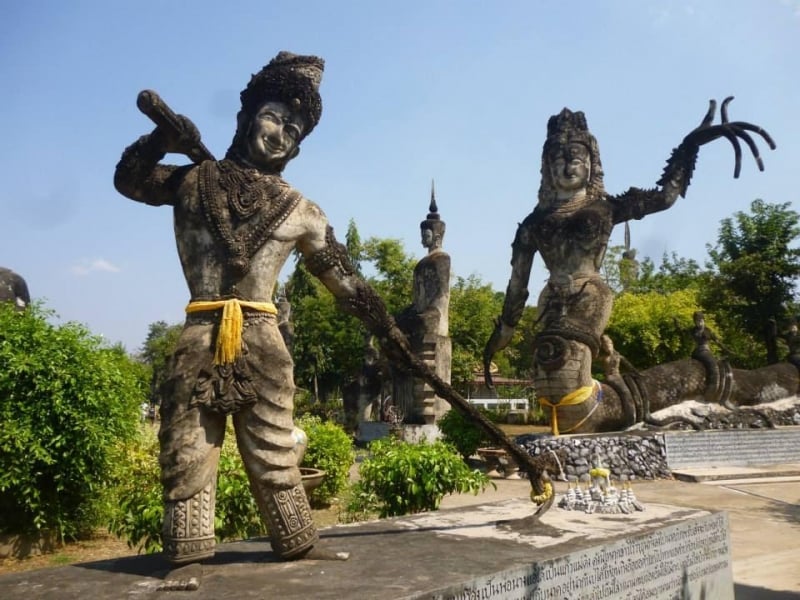
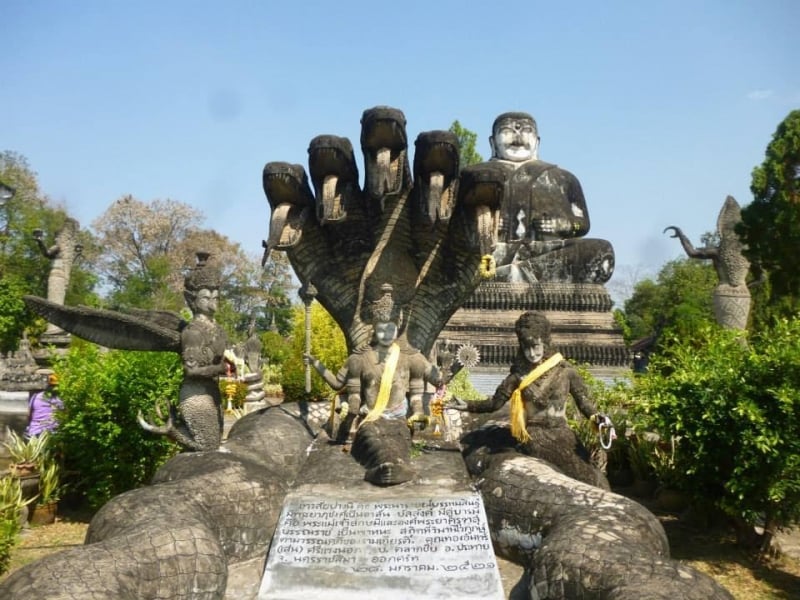
The many statues of the Lord Buddha are probably very different from those that you’ve seen in temples around the rest of the country. Sulilat projected his own opinions and beliefs onto the statues’ designs, resulting in statues that are very different from the norm. Facial expressions vary immensely, with some statues wearing huge grins, some looking pained, and others that appear to be in a supreme state of bliss. The bodily forms also vary from the stick thin to the morbidly obese. There’s a reclining Buddha statue that looks fairly normal at the head end, but as you look along the body, you’ll see that it appears to be burnt, with the lower half of the body all melted away. There are Buddha statues adorned with skulls, those holding an assortment of objects, and a particularly gruesome/wacky statue that shows a Buddha figure stamping on a head!
It isn’t only Buddhism that comes under scrutiny and interpretation, though; there are many curious statues with Hindu roots as well. Some deities have been given even more limbs than normal, and Sulilat has played around with facial expressions here too. Many of the Hindu-based statues wield a grotesque assortment of weapons or include savage or toxic creatures.
Representations of mythical tales
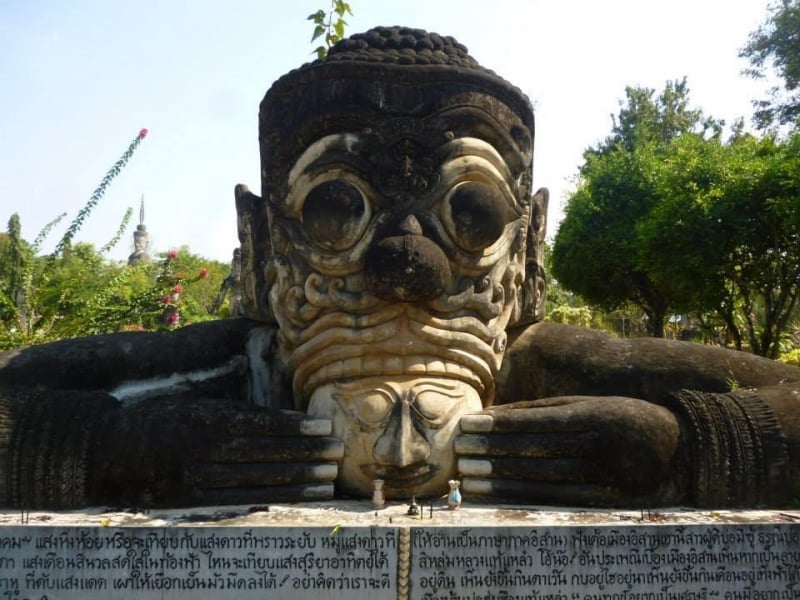
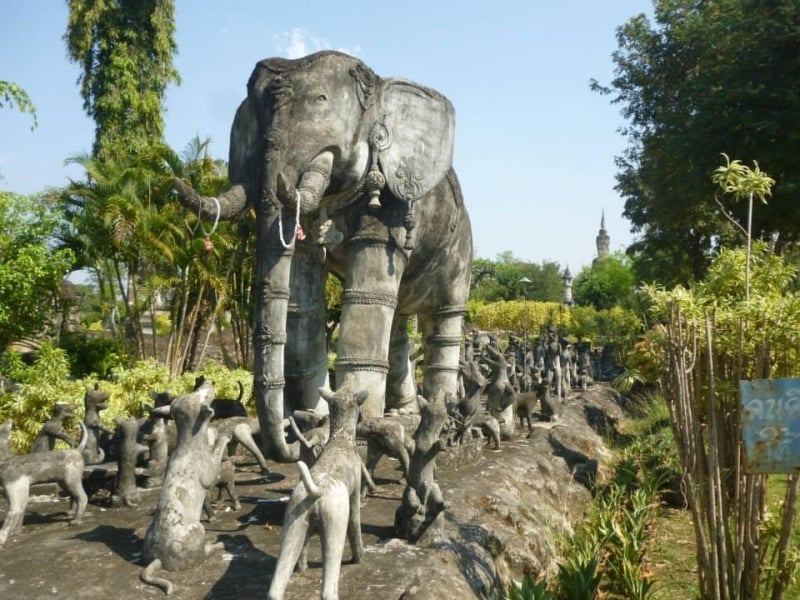
There are many statues of mythical beasts and sculptures that tell legends throughout Sala Keoku, albeit most have been altered according to Sulilat’s views, visions, whims, and interpretations. Some statues combine man and beast, and the gigantic naga statue is impossible to miss. Some statues are immense in proportion while there are those that are tiny with such intricate details—there’s certainly plenty of visual variety!
A large elephant, the national animal of Thailand, stands proudly in the grounds. Many dogs surround the elephant. Far from being a playful or happy scene, you don’t have to look too closely to realise that these dogs are in fact quite angry and vicious. Their faces are contorted into snarls and sneers, made to look like they are hungrily pursuing the elephant. Some, however, are much more comedic, with a pack of dogs chilling out with drinks and food, a group rowing a boat, some playing cards, and those that are depicted whizzing along on scooters!
Easy to reach from the town centre, Sala Keoku is definitely worth a visit when in Nong Khai. Other local attractions include the town’s most revered temple of Wat Pho Chai, Nong Khai Museum, and the bustling Tha Sadej Market with its vast array of goods. Take a stroll alongside the Mekong River or cruise along the waters at sunset, and have a great time discovering this sleepy yet unusual riverside town.




